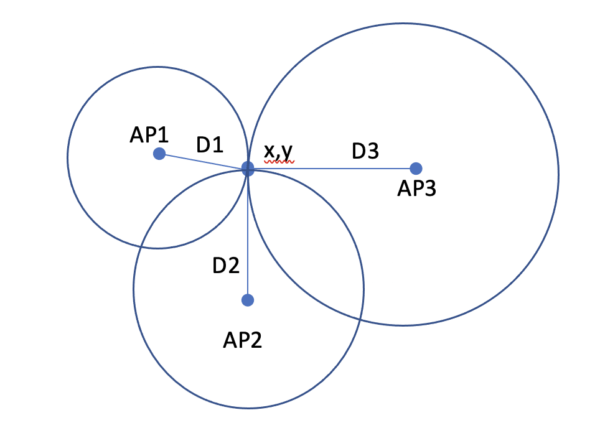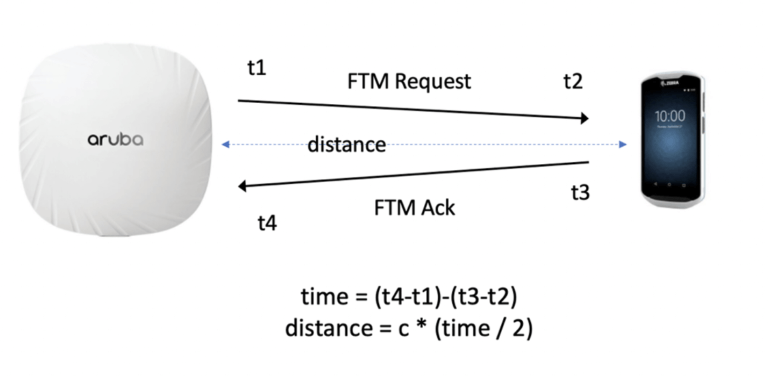The Latest Aruba Networks News
Product and Solution Information, Press Releases, Announcements
| A New Way to Add Indoor Location Context | |
| Posted: Mon Oct 19, 2020 09:40:28 AM | |
|
Location is one of the richest sources of contextual data generated by a data network. Mashed up with data from Internet of Things (IoT) devices and other sources of contextual information, location makes facilities hyper-aware of the status and needs of occupants, assets, and machines. Indoor location is often calculated by using Receive Signal Strength Indicator (RSSI) to estimate the distance between a mobile device and an access point. Once RSSI-based distance calculations have been made from three different access points (AP), with a process called trilateration, the position of the device (x,y) can be estimated.
Trilateration of location x,y using three access points Trilateration based on signal strength provides a gross estimation of distance because RSSI is not linear with distance. That is, the distance estimate error increases exponentially with distance; as a rule, the farther away a device is from an access point the less accurate will be the location approximation. Devices can be located indoors within 5-10 meters in applications with densely deployed access points, less accurately with fewer access points. The new IEEE 802.11mc Round Trip Time (RTT) standard uses fine time measurements (FTM) to calculate distance. Mobile devices adhering to the standard time stamp packets at the time of transmission, and access points similarly time stamp packets upon receipt. Access points then transmit time stamped packets back to the mobile device, which time stamps them upon receipt. The difference between the transmit and receive time stamps indicates flight time, which when divided by the propagation speed of RF indicates how far away the device is from the access points. RTT measurement errors are linear with distance, not exponential like RSSI, boosting accuracy to within 1-2 meters.
802.11mc distance calculation process This method has been used with other technologies but IEEE 802.11mc is the first application using Wi-Fi to apply this technique as an IEEE standard. The key to 802.11mc is that it will only work if both the mobile device and access point support the standard and work together to enable the location calculation. ArubaOS 8.7 was released in July 2020 and included support for 802.11mc on the AP-505 and AP-515 Wi-Fi 6 access points. No hardware changes were required to support 802.11mc on these access points, just an update to ArubaOS 8.7. This month, Zebra Technologies updated its Android firmware to support 802.11mc on the TC52 and TC52HC platforms. In advance of the update, Aruba and Zebra partnered to validate successful 802.11mc operation on Zebra’s mobile devices. Today joint Aruba and Zebra customers in retail, healthcare, logistics, transportation, and other vertical markets can leverage 802.11mc to boost location accuracy. 802.11mc is a big step forward on the journey to build hyper-aware facilities. By boosting location accuracy over existing Aruba infrastructure, 802.11mc enables more precise asset tracking, time and motion analysis, and workflow management in joint Aruba and Zebra deployments. This may be the first you have heard of 802.11mc, but you owe it to yourself to become hyper-aware of its powerful capabilities. Original Post by Aruba Networks. |




